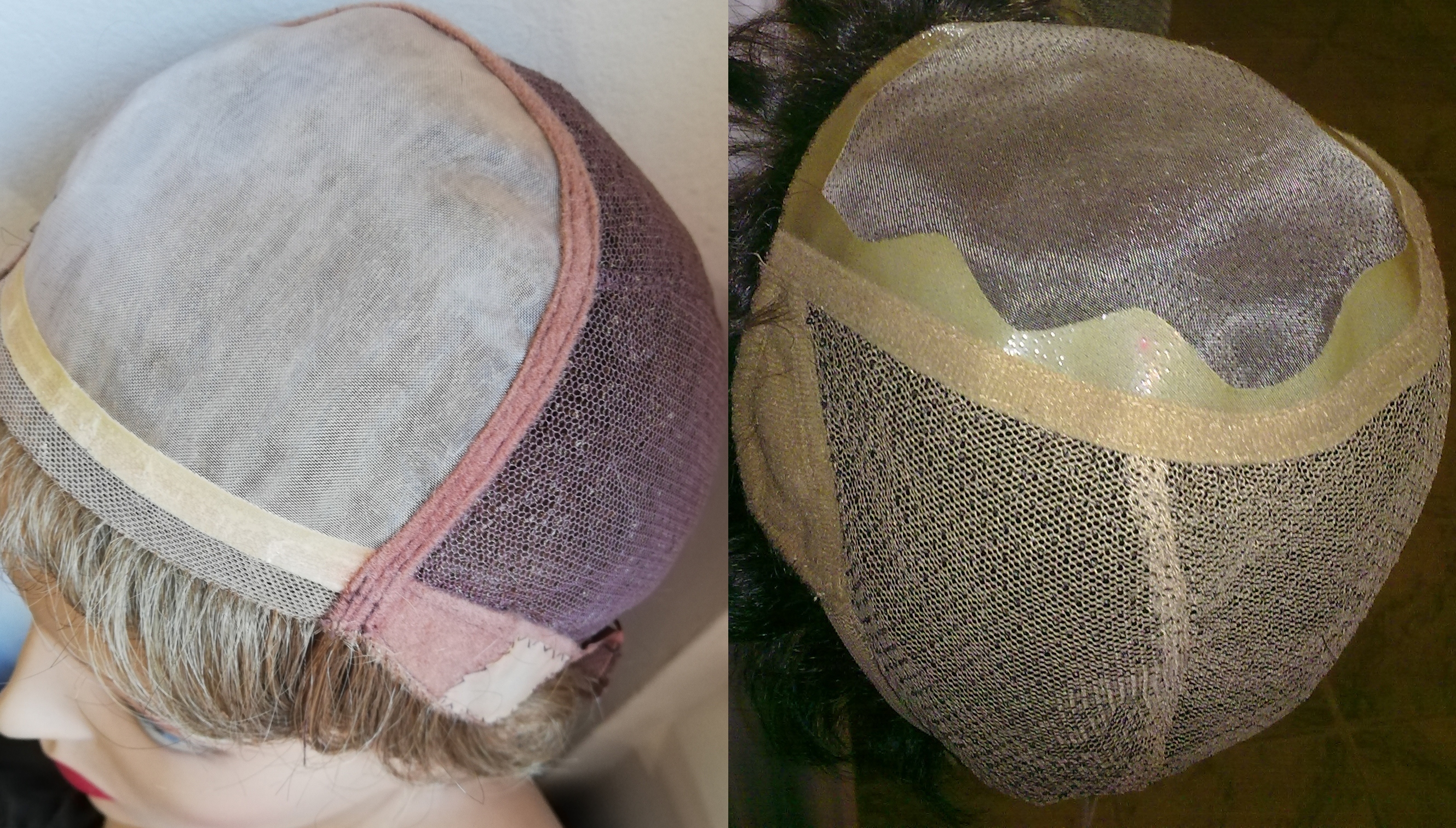The preferences and requirements for the vision of the one who will wear a wig are of paramount importance. To find the right wig, the choice is not only between color and pattern, but also the type of hair. Natural and synthetic hair are used to make wigs. Natural hair can be in its natural color and condition or one that has been chemically treated. The synthetic hair can be made of thermal fibers, modacrylic fibers, high-end synthetic hair approaching natural hair or more ordinary synthetic hair. But for the comfort of wearing a wig, the most important things are the way the wig is made, i.e., its base, when the hair is attached. Below you will read more information about the creation of each type and how to choose which one is best for your needs.
- Classic - The most common technique with machine-sewn hair in tresses (hair that is specially braided in rows).
These tresses are sewn on cotton and elastic bands forming the base of the wig. At the top, the rows are sewn on the lace for better coverage. The hair of such wigs falls in normal directions, has volume at the roots and fits the shape of the head. These wigs are comfortable and have very good air circulation.
This is the best option for price/ quality. The subtlety and craftsmanship of this type is the arrangement of the tresses, so that the wig is having very good coverage without becoming heavy to carry. There are models of this type of workmanship, in which the tresses in the upper part of the wig are sewn more tightly. This gives more volume to the wig and it becomes thicker.
There are models in which at the top of the wig, the rows are attached to the elastic bands, as in the back. This results in more line spacing and makes the wig lighter and more breathable. But it limits the styling of the hairstyle - care must be taken that the rows do not become visible to others.

- Monofilament - More natural and realistic are the wigs on which in their upper front part is sewn monofilament - a kind of transparent, fine tulle, on which the hair is knitting - (braided hair by hair or a few hairs with special needles) to give even more natural effect to the wig. Thus, fixed hair creates the impression that it grows from the scalp. It falls and moves as alive, real hair, and allows shaping in different directions.
Knitting is a slow and laborious process, which leads to a higher price of these wigs. During the production, a different direction of hair growth can be set. This is a common design in modern wigs, as the hair can be combed in all directions and offers more flexibility in styling the hairstyle.
In addition, fine tulle, on which the hair is attached, is much more comfortable for sensitive scalp. The monofilament piece can be different in size, as well as located in different places:
-at the top of the wig - as a center of hair growth;
-where a path is formed in the hair;
-on the whole top - upper part;
- covering 2/3 of the whole wig.
Usually, the back half of the wig is made of tresses, which are attached to elastic bands.
The larger the monofilament part, the higher the wig class is.

- A technique in which a silicone base is used instead of a monofilament. It is applied only where the path of combing the hair is formed. It is most often in the form of a small piece. This foundation is a rougher and harder. It is not as fine as monofilament. The hair of this type of wig is combed only in the already created direction.
With this type of wigs, you need to be more careful in styling and maintaining them. Here, from this type of silicone pad, the hair is easier to pull out than the hair that is knitted on fine tulle (monofilament). That is why these wigs are cheaper than monofilament wigs.
![]()
- Lace Front - Wigs on which in front, on the border of hair growth, is sewn film tulle to create a completely realistic look. This is a very fine mesh, usually serrated at the end where the forehead area is. This creates a complete blend with the scalp to create the illusion that the hair "grows" from the forehead naturally without noticing the end of the wig and provides the most natural looking hairline for wigs. This allows the hair to be combed back and the forehead exposed.
Each hair is handmade - built in the natural direction of growth and gives these wigs a perfect and natural look and comfort when worn.
There are wigs with Lace Front, in which the mesh part is the entire length from ear to ear of the wig. This allows the hair to be tucked behind the ears if desired. An even higher class of performance are the wigs, which combine monofilament and film tulle. The advantages of both types of workmanship are combined to achieve the most natural look of the wig with the possibility to style the hair in each hairstyle.

- Handmade wigs - The highest class of workmanship are wigs that are entirely made hair by hair. They are the softest and most comfortable to wear. With them, every hair moves freely. From the top to the nape of the neck the wig is made entirely of one type of monofilament or several types of fine monofilament are placed, where the hair is knitted (embedded one hair at a time or fine locks of several hairs). They are attached to a special base with special needles by inserting, tying and pulling. This slow and difficult manipulation requires a lot of patience and great concentration. When making a wig the hair must be placed in one direction - from top to end. Wigs made entirely by knitting, creates a real natural look of hair movement in all directions. This completely mimics the natural growth of hair from the scalp and allows for easier styling of different hairstyles. Thanks to the fine special tulle, better ventilation of the head and more comfortable fit is achieved. These wigs are comfortable even for very sensitive scalps. They are an absolute copy of the growth of your own hair and are "light as a feather".




